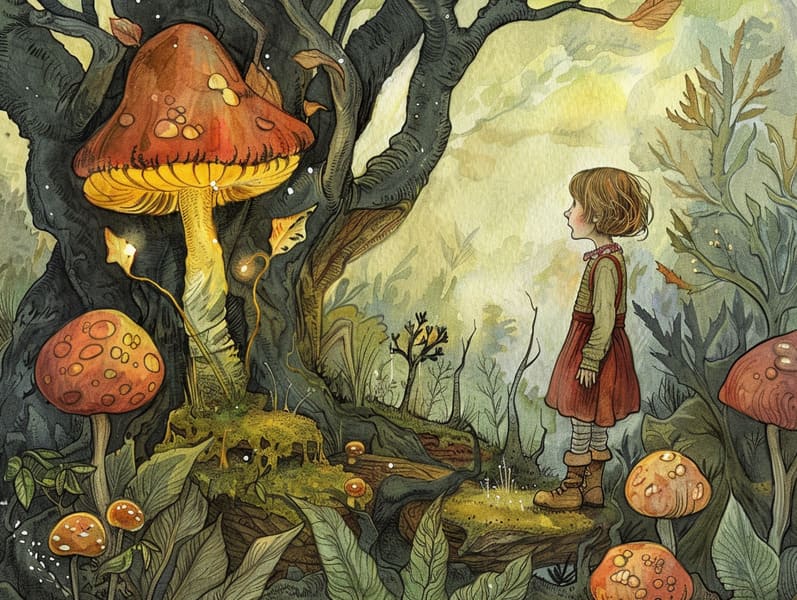
Fairy tales have old origins. These tales have been transmitted from one generation to the next centuries before they were ever recorded. They sprang from a variety of societies, including Eastern traditions. They were initially narrated among grown-ups, often carrying themes and messages concerning the societal norms and beliefs of the time.
The famous Grimm duo, Jacob and Wilhelm, were among the first to assemble many of these beloved stories. Their collection, "Grimm's Children's Stories," included tales like "Cinderella," "Hansel and Gretel," and "Little Snow White," which have since become hallmarks in the world of famous fairy tales. Similarly, Hans Christian Andersen's enchanting stories, such as "The Mermaid's Tale," and "The Story of the Ugly Duckling," have gained the love worldwide, establishing their place in the pantheon of treasured fairy tales.
Despite their age, classic fairy tales remain as impactful as ever, especially as children's bedtime stories. These delightful tales are now available in various formats, including colorful picture books, whimsical animations, and internet fairy tales.
Their lasting appeal can be attributed to several magical reasons:
Important Morals: Traditional fairy tales often present important moral lessons. Fairy tales like "The Boy Who Cried Wolf" teach the virtue of being truthful, while "The Hare and the Tortoise" emphasize the qualities of steadfastness and unassuming nature. These stories offer young ones clear distinctions between good and bad, molding their moral compass in a gentle yet profound way.
Empathy and Understanding: Classic fairy tales frequently feature protagonists facing challenges and struggles, encouraging young listeners to understand with their struggles and applaud their triumphs. For instance, "The Tale of Beauty and the Beast" demonstrates the necessity of looking beyond appearances to comprehend the inner spirit of a individual, fostering insight and awareness.
Cultural Insights: Many fairy tales are infused with the cultural contexts from which they developed. Learning from these tales can provide captivating looks into different heritages, advancing a sense of global understanding and knowledge.
Inventiveness and Imagination: The supernatural elements in classic fairy tales—magical spells—inspire children’s dreams. These narratives guide readers to mythical realms, stimulating inventive ideas and a sense of awe that stays a lifetime.
Ancient fairy tales are not only fantastical but also edifying. They provide alluring tools in building various intellectual and emotional capacities in little ones. When classic fairy tales are voiced, they improve language acquisition by showing new phrases and intricate sentence structures. This practice also cultivates auditory perception and mental focus, as young ones focus on every detail, ready to see what happens next.
Furthermore, contemplating the themes and characters of old fairy tales can promote problem-solving abilities and thought processes. The young learn to notice patterns, guess what will happen, and comprehend cause and effect. These examinations also ease the young articulate their thoughts and feelings, promoting their emotional intelligence.
In today’s cyber age, the proliferation of online storybooks has made these narratives more accessible than ever. Internet resources and digital apps share ample collections of classic fairy tales that can be perused or played anytime, anywhere. Fairy tales read aloud are particularly well-liked, giving an delightful method for the young to experience these charming tales. Read-aloud stories and read-to-me stories move characters and settings to life, often supported by fantastical soundtracks and harmonies that heighten the tale journey.
The lasting allure of ancient fairy tales lies in their ability to shift to modern society while retaining their main lessons. Contemporary renditions of these stories often awesome site showcase more varied characters and modern settings, making them relevant to today’s audience. However, the central morals of daring, goodness, and rightness remain unchanged, continuing to move listeners of all ages.
Fairy tales also offer a sense of peace and predictability. They put out a well-ordered narrative with a transparent beginning, middle, and end, often coming to a close with the wrap-up of conflicts and the triumph of virtue over vice. This regularity can be reassuring for young ones, presenting a sense of steadfastness in an always shifting world.
Traditional fairy tales continue to allure and teach new generations, maintaining their fascination and pertinence in modern society. As kids' bedtime tales, they deliver a perfect blend of allure and teaching, backing moral values, empathy, and creativity. The abundance of online fairy tales and the widespread nature of fairy tales read out loud affirm that these timeless tales remain reachable to new generations.
By guarding and conveying these tales, we continue to commemorate the rich tapestry of mythology and cultural heritage. Whether you are experiencing a beautifully illustrated book, accessing a digital collection, or listening via an audiobook, the allure of timeless fairy tales is always within reach. These fairy tales reveal of the unwavering impact of fairy tales and its ability to unite us across time and space.
Even if you are experiencing a colorful picture book, enjoying a online collection, or listening through an read-aloud story, the radiance of classic fairy tales is always within reach.
These stories show us of the unchanging strength of storytelling and its ability to unite us across epochs and places, casting a charm that delights and instructs alike.